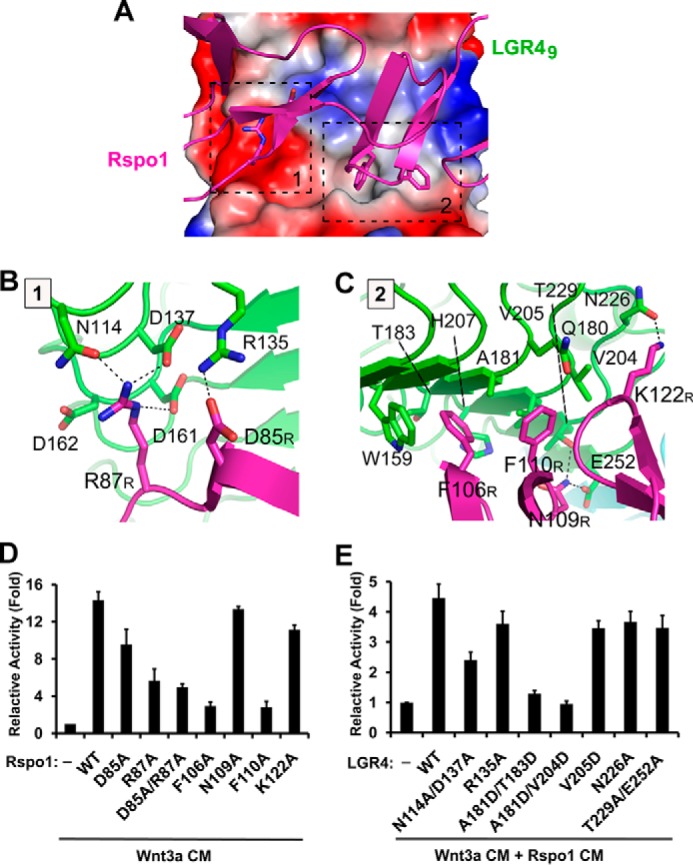FIGURE 4.

Interface between LGR4 and Rspo1. A, interface between LGR4 and Rspo1. The negatively and positively charged surface and hydrophobic surface of LGR4 are colored in red, blue, and gray, respectively. The LGR4-interacting residues of Rspo1 are represented as sticks. The two interaction regions (regions 1 and 2) in LGR4 are indicated by black dashed lines. B and C, detailed interactions in regions 1 and 2. LGR4 and Rspo1 are colored in green and purple, respectively. The LGR4-interacting residues in Rspo1 are labeled with the R subscripts. D, effects of Rspo1 mutations on the stimulation of Wnt signaling. The potentiation of Wnt signaling by Rspo1 mutants was examined using β-catenin-driven Super 8× TOP/FOPFlash luciferase reporter assays. HEK293T cells were transiently transfected with full-length LGR4, TOPFlash, or FOPFlash firefly luciferase, and Renilla luciferase plasmids and were then stimulated with the CM of Rspo1 mutants in the presence of Wnt3a CM. E, effects of LGR4 mutations on the stimulation of Wnt signaling. HEK293T cells were transfected with the LGR4 mutants, TOPFlash or FOPFlash firefly luciferase, and Renilla luciferase plasmids and were then stimulated with the CM of wild-type Rspo1 and Wnt3a.
